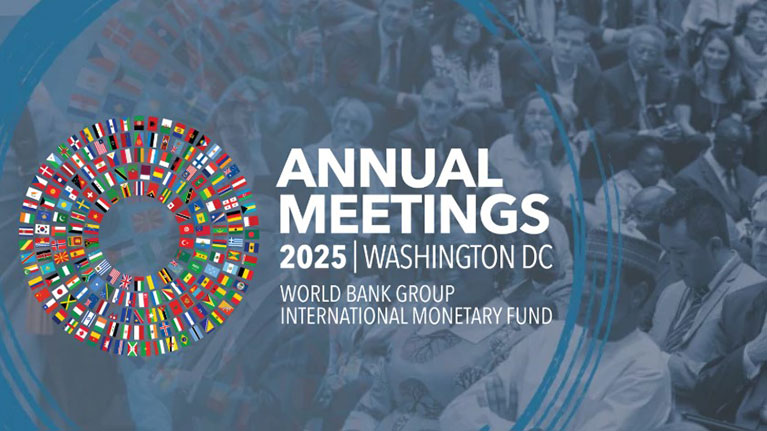The EU’s regulatory framework for data centres is quickly evolving, combining support and funding programmes with measures that pursue energy transition and climate goals. The European Commission (“EC”) will be putting forward a Data Centre Energy Efficiency Package in Q1 2026 – together with the Strategy Roadmap on Digitalisation and AI – the aim of which is to achieve carbon-neutral data centres by 2030. The implications of this package could be significant for key stakeholders, including investors and operators of data centres.
Data centres in the EU: balancing strategic investments and energy efficiency
In the push for EU digital sovereignty and global competitiveness, data centres are a critical infrastructure. The EU’s “State of the Digital Decade 2025” report emphasises the need for further private and public targeted investment in advanced connectivity infrastructure, secure and sovereign cloud and data infrastructures, and AI. While investments in data centres are poised to yield significant returns in growth and productivity, ensuring that the EU remains competitive and resilient in the digital age, such growth comes with substantial energy consumption.1
To tackle these challenges, the EU has adopted several regulatory instruments, and recently announced that in Q1 2026 it will propose a new Data Centre Energy Efficiency Package alongside the Strategic Roadmap on Digitalisation and AI for the Energy Sector, aiming at making data centres carbon-neutral by 2030.
Evolving EU rules to address energy consumption of data centres
Over the last few years, we have seen rapidly evolving EU rules in relation to the data centers and their energy consumption. In sum:
- The (revised) Energy Efficiency Directive (“EED“) in 2023, adopts the ‘energy efficiency first’ as a core principle of EU energy policy.2 Member States are mandated to prioritise this principle in all relevant policy decisions and significant investment choices across both energy and non-energy sectors. It includes requirements for monitoring and reporting, specifically mandating the assessment and disclosure of data centres’ energy performance. The information provided by data centres with an installed information technology power demand of at least 500 kW will be published in a ‘European database’. The key performance indicators that must be communicated to the European database are set out in the Delegated Regulation (EU/2024/1364) on sustainability “ratings“.3 The various Omnibus packages have so far not targeted the EED, although it remains to be seen if a specific Omnibus for the energy sector would be launched at some point in the future.
- The Taxonomy Regulation, which establishes a classification system and defines criteria for economic activities that are aligned with a net zero trajectory, as well as broader environmental goals.4 The EU Taxonomy Climate Delegated Act5, enshrines rules for classification of data centre-related activities with a view to climate change mitigation, building on the European Code of Conduct for Energy Efficiency in Data Centres6, which is a voluntary initiative that provides data centres with guidelines and best practices to reduce energy consumption.
- Energy efficiency requirements under the AI Act, which lays down harmonised rules on the development and use of AI in the EU.7 The AI Act imposes transparency requirements for General-Purpose AI Models (“GPAI Models“), which includes energy consumption reporting. The EC, together with existing EU standardisation organisations and stakeholders, will create standards focused on AI, aimed for example, at improving energy efficiency. While the AI Act does not include rules on data centres, it requires the EC and the Member States to create voluntary codes of conduct on energy efficiency of data centres.8
- EU funding programmes to take into account energy efficiency in data centres, for example, by supporting green projects through programmes like Connecting Europe Facility 2, Digital Europe programme, Horizon Europe, InvestEU and the Recovery and Resilience Facility.
- The EU Battery Regulation, which establishes stricter requirements on the design, production, and recycling of batteries, to promote sustainability and reduce environmental impact.9 Those requirements may impact energy storage in data centres, both in relation to the installation and recycling of batteries.10
- The Ecodesign Regulation for servers and data storage products, which establishes energy efficiency requirements for enterprise servers and online data storage products, typically used in data centres.11 These products are subject to certain requirements, including minimum efficiency, maximum consumption in idle state and information of the operating temperature. They are also subject to circular economy requirements for the extraction of components and critical raw materials.
- The Report on EU Green Public Procurement criteria for data centres, server rooms and cloud services, which offers a set of guidelines to help public authorities procure data centres’ equipment and services in line with European policy objectives for energy, climate change and resource efficiency, as well as reducing life cycle costs.12
- The European High Performance Computing Joint Undertaking (EuroHPC JU)13, which aims to build and operate an interconnected EU supercomputing and AI infrastructure ecosystem, fostering technological sovereignty and competitiveness. The EuroHPC JU, with a budget of approximately EUR 7 billion for 2021–2027, provides financial support through open calls offering procurement as well as research and innovation grants. Some of the EuroHPC JU’s projects are particularly focused on sustainability.
- The EC regularly assesses the energy efficiency and sustainability of data centres, using various tools. The first technical report on this topic provides insights from the first year of implementation of these rules and the effectiveness of the current reporting scheme. It includes an assessment of the scheme itself, the reported data, and the user experience of the reporting entities.14
- The application of State aid rules to sustainable data centres. The call for evidence for the new Cloud and AI Development Act acknowledges the potential role of financial support in line with applicable State aid rules to data centres with a high sustainability contribution, with the aim to increase capacity. In addition, the Clean Industrial Deal State Aid Framework (CISAF) supports the development of clean energy, industrial decarbonisation and clean technology, which may also have an impact on data centres.
Looking ahead
2026 is set to bring new regulatory developments. In Q1 2026, the EC will roll out a proposal for a Data Centre Energy Efficiency Package alongside the Strategic Roadmap on Digitalisation and AI for the Energy Sector.
A public consultation on the Strategic Roadmap is already ongoing and it is open until 5 November 2025, emphasising its goal to leverage the potential of digital and AI technologies for the energy system, while mitigating associated risks and supporting the competitiveness and decarbonisation of the EU economy. This would include measures to sustainably integrate data centres’ electricity demand into the broader energy system.15
The EC is also expected to publish a Cloud and AI Development Act in Q4 2025 or Q1 2026, aimed at increasing Europe’s cloud and AI infrastructure capacity.16 The goal of the proposal will be to triple EU data centre processing capacity in the next 5-7 years and allow for simplified permitting and other public support measures, if they comply with requirements on energy efficiency, water efficiency, and circularity.
Finally, on 8 October 2025, the EC published its Apply AI Strategy, where it refers to the Strategic Roadmap and Cloud and AI Development Act as including strategies to improve energy efficiency in data centres.17
To conclude, in the context of the ongoing simplification drive of EU regulation under the various Omnibus packages, energy consumption by data centres and AI infrastructure remains high on the EC’s agenda. So much is evident from the core strategies, consultations and action plans that the EC has published over the past months. Even though stakeholders are still grappling with a quickly evolving regulatory framework, new energy efficiency measures are already on the horizon, with more details expected in Q1 2026. At the same time, investors, developers and operators of data infrastructure will also be able to benefit from the various support measures that the EU and the Member States have rolled out and are expected to further deploy in the future.
Elisabetta Zuddas (White & Case, Legal Trainee, Brussels) contributed to the development of this publication.
1 State of the Digital Decade 2025 report of 16 June 2025, available here.
2 Directive (EU) 2023/1791 of 13 September 2023 on energy efficiency and amending Regulation (EU) 2023/955, available here. The EED sets a (revised) EU energy efficiency target, making it binding for EU countries to collectively ensure an additional 11.7% reduction in energy consumption by 2030.
3 Commission Delegated Regulation (EU) 2024/1364 of 14 March 2024 on the first phase of the establishment of a common Union rating scheme for data centres, available here. The European Commission has published a user manual (available here) for accessing the European database, a reporter guide (available here) and frequently asked questions and guidance (available here).
4 Regulation (EU) 2020/852 of 18 June 2020 on the establishment of a framework to facilitate sustainable investment, and amending Regulation (EU) 2019/2088, available here.
5 Commission Delegated Regulation (EU) 2021/2139 of 4 June 2021 supplementing Regulation (EU) 2020/852 of the European Parliament and of the Council by establishing the technical screening criteria for determining the conditions under which an economic activity qualifies as contributing substantially to climate change mitigation or climate change adaptation and for determining whether that economic activity causes no significant harm to any of the other environmental objectives, available here. The Taxonomy is being revised as part of the Omnibus simplification process, see W&C Client Alert ‘EU Omnibus Package: 10 things you should know about the proposed changes to key sustainability legislation‘.
6 European Code of Conduct for Energy Efficiency in Data Centres of 21 March 2025, available here.
7 Regulation (EU) 2024/1689 of 13 June 2024 laying down harmonised rules on artificial intelligence and amending Regulations (EC) No 300/2008, (EU) No 167/2013, (EU) No 168/2013, (EU) 2018/858, (EU) 2018/1139 and (EU) 2019/2144 and Directives 2014/90/EU, (EU) 2016/797 and (EU) 2020/1828 (Artificial Intelligence Act), available, here.
8 See also W&C Client Alert ‘Energy efficiency requirements under the EU AI Act | White & Case LLP‘.
9 Regulation (EU) 2023/1542 of 12 July 2023 concerning batteries and waste batteries, amending Directive 2008/98/EC and Regulation (EU) 2019/1020 and repealing Directive 2006/66/EC, available here.
10 See also W&C Client Alert ‘New EU Batteries Regulation: introducing enhanced sustainability, recycling and safety requirements | White & Case LLP‘.
11 Commission Regulation (EU) 2019/424 of 15 March 2019 laying down ecodesign requirements for servers and data storage products pursuant to Directive 2009/125/EC and amending Commission Regulation (EU) No 617/2013, available here.
12 Development of the EU green public procurement (GPP) criteria for data centres, server rooms and cloud services report of 8 June 2020, available here.
13 The European High Performance Computing Joint Undertaking (EuroHPC JU), available here.
14 Assessment of the energy performance and sustainability of data centres in EU report of July 2025, available here.
15 Strategic Roadmap for digitalisation and AI in the energy sector – consultations opened, available here.
16 AI Continent – Initiative on new cloud and AI development act, available here.
17 Apply AI Strategy, available here. A public consultation and call for evidence closed on 4 June 2025, feedback available here.
White & Case means the international legal practice comprising White & Case LLP, a New York State registered limited liability partnership, White & Case LLP, a limited liability partnership incorporated under English law and all other affiliated partnerships, companies and entities.
This article is prepared for the general information of interested persons. It is not, and does not attempt to be, comprehensive in nature. Due to the general nature of its content, it should not be regarded as legal advice.
© 2025 White & Case LLP








